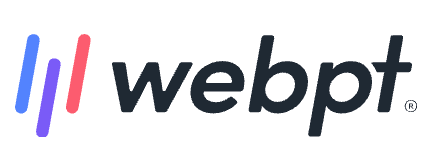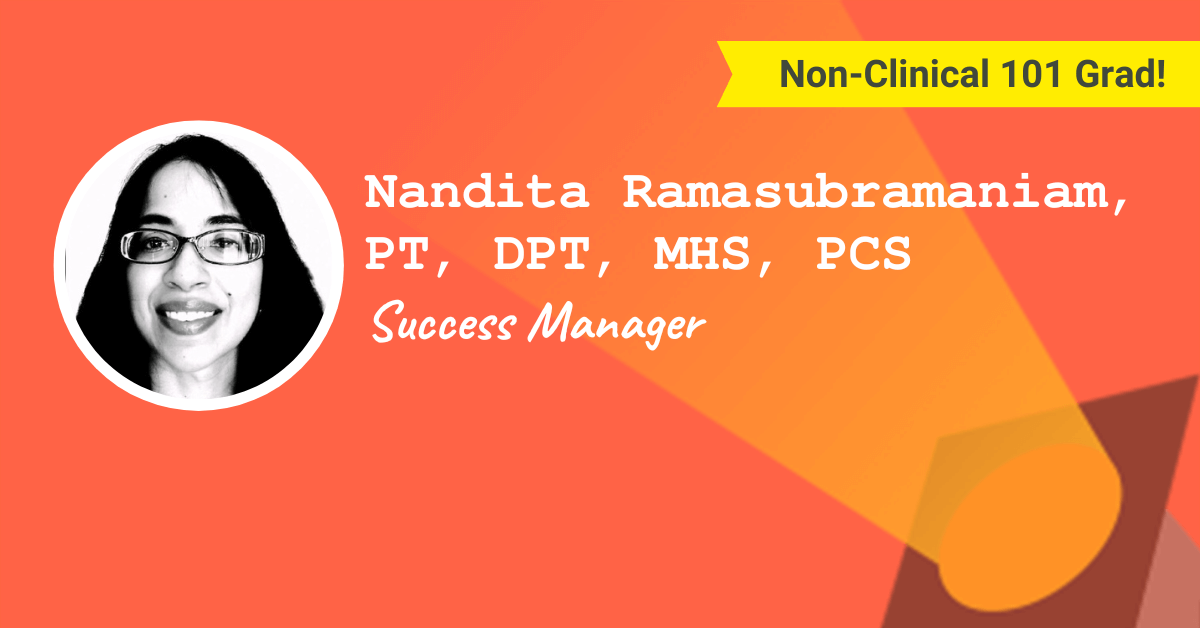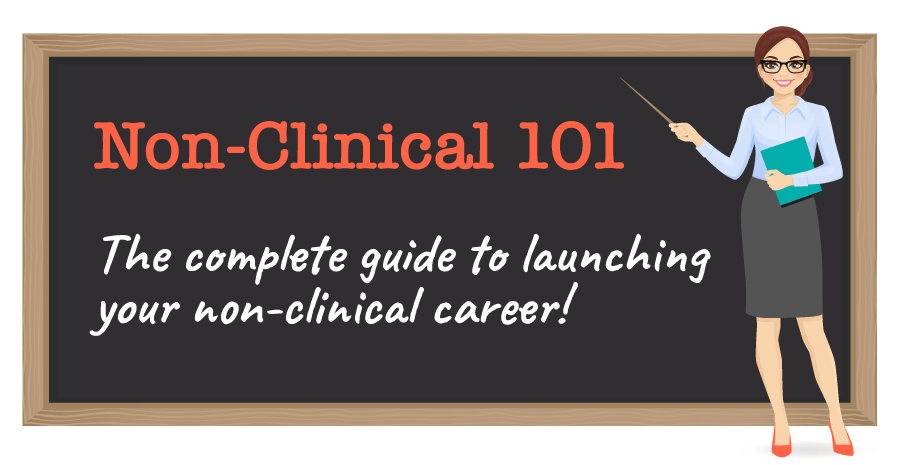This week’s spotlight is on Nandita Ramasubramaniam, PT, DPT, MHS, PCS, a Non-Clinical 101 graduate who is now Success Manager at WebPT!
This post may contain affiliate links or codes. This won’t increase your cost, but it helps keep TNCPT alive, and free of annoying ads! Thank you for your support. 🙂
What is your full name, title, and company name for your current, primary role?
Nandita Ramasubramaniam, PT, DPT, MHS, PCS — Success Manager (Software) at WebPT

Where are you located?
Mesa, Arizona.
Where did you go to PT school, and what year did you graduate?
I earned a Bachelor of Physiotherapy degree in my home country in 2002. Subsequently, I pursued a Master of Health Science degree at the University of Indianapolis, graduating in 2006. Later, in 2019, I completed my Doctor of Physical Therapy degree at the University of Montana.
Please refrain from contacting our spotlight participants on social media. There are thousands of readers just like you out there. 🙂 Please ask your questions in the comments on this blog post.
If you’re a Non-Clinical 101 student, you can network with many of our spotlight participants in the alumni groups!
What did you do when you first finished school, and for how long?
After obtaining a bachelor’s degree, I pursued further education in Neuro-Developmental Treatment (NDT), which encompassed both theoretical and practical aspects.
Concurrently, I embarked on my professional journey at an outpatient pediatric rehabilitation center, specializing in a diverse array of diagnoses. I focused primarily on neurosensory conditions but also treated occasional orthopedic and musculoskeletal cases.
I also provided services to pediatric, adult, and geriatric populations in the home health setting, addressing both neurological and orthopedic needs.
This multifaceted experience spanned two and a half years until I embarked on my journey to the United States to pursue a master’s degree.
What did you enjoy about your early roles? What didn’t you enjoy?
What I enjoyed:
When reflecting on what I enjoyed most about my early roles, one thing stands out vividly: the absence of documentation 😃 Coming from a time when physical therapy was still evolving in my country of origin, the luxury of providing one-on-one care without the need for any paperwork was delightful. Patients simply paid for services after each session, and the intricacies of dealing with insurance were foreign to me until I ventured abroad.
Beyond this unique aspect, my passion for the profession was fueled by the direct impact I could make on individuals across diverse age groups and diagnoses. Witnessing tangible progress and improvements in my patients’ health and well-being brought me immense satisfaction. I relished the challenge of tailoring treatment plans to suit each patient’s specific needs and collaborating with interdisciplinary teams to ensure comprehensive care.
Moreover, the personal connections formed with my patients and their families added an extra layer of joy to my work. Their expressions of gratitude—like preparing delicious meals for me and inviting me to milestone celebrations—were touching reminders of the meaningful relationships I formed through my practice. These experiences contributed to the tapestry of my early career and continue to inspire my professional journey today.
What I did not enjoy:
What proved challenging in those early roles was the limited access to research materials and databases. Despite studying from textbooks authored by professionals from other nations, I found it difficult to implement cutting-edge therapy interventions as prescribed. This was mainly due to the lack of necessary therapy equipment, appropriate orthotics and prosthetics, or essential assistive devices.
Additionally, financial constraints often prevented some patients from accessing life-changing surgeries and necessary medications. As a young professional eager to make a positive impact, I felt limited in my efficacy. I was keen to expand my knowledge and skills, and I yearned for opportunities to further develop my expertise.
What else have you done since then, prior to your current role?
After completing my master’s degree in the US, I briefly worked in acute care before joining a hospital-owned outpatient pediatric center. There, I specialized in serving the pediatric population in both outpatient and early intervention settings.
Becoming an American Board of Physical Therapy-certified Pediatric Clinical Specialist was a significant milestone.
However, being in pediatrics, heavy documentation loads posed a consistent challenge, demanding several extra hours beyond regular work hours. Moreover, the intense physical exhaustion, inflexibility, and demanding schedule took a toll on me.
Five years later, I began transitioning to outpatient orthopedics, sports medicine, and adult neuro within the same organization, while still maintaining involvement in pediatrics. This shift provided me with a stimulating change of pace and significantly reduced documentation requirements.
After nine years in the Midwest, I relocated to the Southwest, where I continued my work in acute care with both pediatric and adult populations. This transition provided me with a wide breadth of experience, encountering diagnoses I had not previously come across in outpatient settings. Moving from outpatient to inpatient care also brought the benefit of completing all documentation before the end of each day, ensuring a lighter mind frame after work hours.
Throughout my clinical career, I was fortunate to exclusively work one-on-one with patients. There was never a need to overlap patients, allowing me to provide focused and individualized care at all times.
When and why did you decide to do something non-clinical?
Around the 18-year mark of my clinical career, the physical demands of the profession began to take a toll, prompting me to consider alternative paths. It wasn’t until the pandemic hit that I discovered non-clinical options. By 2022, fate intervened when I developed a frozen shoulder, nudging me to step back.
During the brief pause that ensued, I had the mental space to explore other career avenues. I enrolled in the Non-Clinical 101 course and discovered my interest in the tech industry. I engaged with professionals in the field, attended workshops on product design and development in healthtech, and pursued courses in data science, product design (UX/UI), product ownership, and customer success.
The final decision, at that point, was influenced in part by the relative ease of entry into the tech industry through a customer success role compared to others. I pursued a certification in Customer Success. After all, as a physical therapist, I had spent two decades as a success manager of patient lifecycles, refining my services (products) to alleviate “pain points,” driving the adoption of personalized care plans, ultimately catalyzing success.
To explore the similarities between the two realms, I invite you to check out my LinkedIn post discussing the numerous parallels between the roles of a customer success manager and a physical therapist.
In addition, check out my infographic that connects the customer journey in software as a service (SaaS) with the patient journey in physical therapy, offering insights for clinicians seeking new career paths.
What are you doing these days?
I am a success manager at WebPT.
Are you still treating patients, or are you solely non-clinical?
I am solely non-clinical.
How long have you been in your current success manager role?
Since October 2022.
Did you get any special certifications or training along the way to help you get into your current role?
Yes, I:
- Completed Non-Clinical 101, with a focus on the customer success lesson
- Earned a certification from Aspireship after completing their Customer Success Foundations course
- Finished several courses on LinkedIn Learning, with a focus on account management and Salesforce
How did you find your job? Did you apply or find it through a connection?
I networked with professionals within my current company over a six-month time span, establishing ongoing professional relationships. I regularly monitored the company’s career board, where I eventually found an opening that matched my interests.
A reference from an employee and leveraging a Non-Clinical 101 connection ultimately helped in pulling my hat out of the ring.
Did you do anything special to your resume and cover letter to land the job?
I devoted considerable effort to crafting a tailored resume for the tech industry, meticulously refining and honing it over time. Jennifer Gallant (another Non-Clinical 101 graduate and community member) played a pivotal role in this endeavor, collaborating closely as we pooled our expertise and insights into the project.
Our post on starter tips and strategies on LinkedIn provides guidance on transforming a rehabilitation-focused resume into one that aligns with the qualifications sought in the tech industry.
What was the interview like for the success manager role?
While circumstances have shifted since, at that time I underwent a rigorous interview process comprising five rounds.
The initial round involved discussions with two managers representing distinct segments within the customer success realm. Subsequent rounds included meetings with two peers, another Manager of Customer Success, the Director of Customer Success, the VP of Customer Success, and ultimately, the Chief Revenue Officer.
How have people reacted to you leaving patient care?
The outpouring of support from everyone was truly remarkable. They were well-acquainted with my journey and were inspired by my decision. Those familiar with me recognize the resilience, adaptability, and grit I bring to any endeavor.
My family, friends, and former colleagues had unwavering confidence in my ability to navigate through this transition. Their lighthearted remarks, such as “No problem, you’re a mountain goat!” and “You are an energizer bunny!” reflected their belief in my ability to overcome challenges.
Perhaps, we should pose the question: “What was MY reaction to transitioning away from patient care?” 😆 For me, this journey was a period of profound introspection, where I delved deep within myself and exercised patience. Change, as I discovered yet again, is a complex process, encompassing moments of despair, self-doubt, and reassessment alongside feelings of hope, gratitude, and trust in the journey ahead.
It provided an opportunity for honest self-reflection, allowing me to shed old patterns and filters that no longer served me, reassess my values, and cultivate self-love. It also involved discerning between the impulses of ego and the wisdom of intuition.
Through it all, I emerged stronger, with a deeper understanding of myself and a newfound sense of clarity.
What’s a typical day or week in the life like for you? What types of tasks and responsibilities fill your time?
The role of a customer success manager is dynamic, with each day presenting new challenges and opportunities. While plans are made, flexibility is key, as situations may unfold differently than anticipated.
Typically, I begin my day by reviewing the task list I prepared the previous evening for the upcoming morning. I log into the customer relationship management (CRM) platform to check for any new tasks (CTAs), review emails, and scan for new Slack (internal communication channel) messages. After categorizing tasks by importance and urgency, I create a prioritized list. This allows me to strategically plan my workflow around pre-scheduled meetings and efficiently tackle tasks throughout the day.
My tasks encompass a diverse range of responsibilities, aligned with key business elements:
- Conduct detailed analyses into emerging scenarios and gather insights by collaborating cross-functionally with Product, Sales, Solutions Architect, Data, Marketing, RCM, and Operations teams
- Compile data, create decks and conduct presentations for EBRs, optimization/adoption reviews, and other key meetings
- Maintain a pulse on members’ bottlenecks, ensure thorough documentation, and update success plans
- Strategize and engage in contract negotiations
- Handle urgent customer (“member” at WebPT) matters through quick calls
- Initiate and complete self-started projects focused on crafting educational materials, such as infographics, handouts, and slides, covering topics of identified value for members
- Ideate upon and implement productivity hacks, such as leveraging artificial intelligence (AI), to create efficient and repeatable processes
What are some of the rewards of your role? What are the biggest challenges?
Rewards:
As a software success manager, I find immense fulfillment in serving as a strategic business partner to fellow rehabilitation professionals, providing them with technology solutions and industry-specific insights. My focus is on providing technology solutions and industry-specific viewpoints to aid in achieving outcomes. I have a genuine passion for data and analytics, and I enjoy translating the insights gleaned from numbers into compelling narratives.
Hearing feedback from members affirming the positive impact on their work lives and, consequently, on the lives of their patients is incredibly rewarding. It’s particularly gratifying when members share success stories, such as achieving significant financial gains or improving key performance metrics, attributed to our collaborations. Witnessing the tangible results of our efforts, such as improved payment-per-visit numbers and enhanced operational efficiency through optimized processes and reporting, is truly fulfilling.
Challenges:
As a software success manager, traversing the ever-evolving terrain of healthcare technology necessitates a sound adaptability/adversity quotient, especially when solutions (products) provided are mission/business critical to clients’ daily operations. Embracing ambiguity, adeptly shifting contexts, and ensuring visibility across diverse stakeholder hierarchies (both internal and external), can be demanding.
This multifaceted role demands that a success manager wears numerous hats, from project manager and process improvement specialist to issue resolution lead, negotiator, and advocate for both company and client interests. Skillfully balancing these varied responsibilities calls for a blend of agility, resilience, and an unwavering dedication to the company’s mission amid the fluidity of evolving demands and expectations.
How did your clinical background prepare you for this role? Which skills transferred?
Utilizing my clinical background as a springboard, I brought a rich tapestry of transferable skills to my role as a software success manager. Drawing from my experience in patient care, I smoothly merged healthcare with technology, applying problem-solving, critical thinking, and clear communication skills. By infusing the essence of data-driven ‘evidence-based practice’ and patient-centered care into my approach, I quickly grasped nuances of analytics and business intelligence in the tech world, generating actionable insights for user-centric decisions.
For a comprehensive exploration of the transferable skills gained from my clinical background, I invite you to explore my LinkedIn post on the similarities between the two realms.
What type of person do you think would do well in your success manager role?
The role of a success manager demands a diverse skill set to excel. An individual who thrives in this position typically exhibits the classic four: Intelligence Quotient, Emotional Quotient, Adversity Quotient, and Social Quotient (IQ, EQ, AQ and SQ).
- Interpersonal skills for building and nurturing client relationships
- Balanced assertiveness and confidence in setting boundaries, including the ability to say ‘No-And’ politely when necessary
- Composure and a strong sense of self-awareness when navigating challenging situations and conflicts
- Attention to detail for managing multiple tasks and ensuring quality deliverables
- Proactive problem-solving to drive customer success initiatives
- Effective communication, both verbal and written, to convey technical information clearly
- Collaborative mindset for working effectively with diverse stakeholder hierarchies (internal and external)
- High adaptability/adversity quotient to navigate the dynamic healthcare technology landscape
Do you work remotely or onsite?
I primarily work remotely, with in-person gatherings for departmental events and conferences occurring twice or thrice a year.
Did you read any books, take any courses, or do anything special overall to get you where you are today?
Books:
I found Would You Do That to Your Mother?: The “Make Mom Proud” Standard for How to Treat Your Customers by Jeanne Bliss particularly insightful. It promotes a service approach focused on treating customers with care, respect, and empathy, akin to how one would treat their own mother. This book emphasizes the importance of fostering positive customer experiences through a user-centric approach and aligning business practices with ethical and compassionate standards.
Check out The Harvard Negotiation Project book series which includes seminal works like Getting to Yes by Roger Fisher and William Ury, Difficult Conversations by Douglas Stone, Bruce Patton, and Sheila Heen, and Getting Past No by William Ury.
Courses:
Feel free to peruse the numerous courses and certifications I’ve completed, as outlined in my LinkedIn profile, to continuously enhance my skills and knowledge.
Other Resources:
I regularly explore resources from Inc.com, HBR, PsychologyToday, and Hack Spirit to deepen my understanding of psychology and its applications in various aspects of my work and daily life.
What is a typical career path for someone in your success manager role?
The career trajectory for individuals in my role is diverse, influenced by both organizational structure and personal aspirations.
VERTICAL: Within the Success Org, one may progress vertically from Small Business to Mid Market to Enterprise segments, Director of Success, and VP of Success. Within each segment, one may ascend through levels like Mid Senior or Senior Success Manager, Supervisor of Customer Success, Manager of Customer Success, and Senior Manager of Customer Success.
BRANCH OUT: If none of the above ‘traditional’ paths appeal to you, look into branches such as Digital Customer Success, Channel Partner Success, Program Success, etc.
LATERAL: Transitions across various domains also present avenues for advancement. Roles in Project Management, Solutions Engineering, and Product Marketing, among others, offer multifaceted opportunities for professional growth and development.
Delve into the value clinicians bring to the Product Org through my LinkedIn posts:
PART ONE: Exploring Parallels Between Agile Product Development And Physical Therapy
What is next for you? What are your high-level career aspirations?
I’m dedicated to ongoing learning and growth, always seeking ways to expand my skills and stay current. Whether my career takes a vertical or horizontal trajectory is yet to be determined, but in the meantime, I actively seek opportunities to leverage existing competencies in more meaningful ways.
I have a strong desire to build. I want to create. I want to directly impact or influence an innovation.
As a clinician-turned business partner/consultant in the SaaS industry, I bring a unique perspective in understanding and capturing user needs and solution requirements.
What would you recommend to someone who is considering going into a role like yours? Do you have any special words of wisdom for the readers?
In the healthtech domain, clinicians extend their pivotal role beyond clinical settings to uphold user-centricity. Through our versatility, we emerge as indispensable contributors in this field. NEVER underestimate the value a clinician brings.
Know Your Wants
Begin by understanding your own desires and values. Be honest with yourself and conduct assessments to identify negotiables and non-negotiables. Project from a place of intuition rather than fear.
Research and Network
Transitioning into a new role requires thorough preparation. While considering a transition, stay connected to the realities of the role. Research the industry landscape, network with professionals, and gather insights to make informed decisions.
Understand Variability
The flavor of customer success can differ significantly across domains, between companies, and even within the same organization over time. Factors such as company stage, leadership changes, acquisitions, or buyouts can all influence the nature of the role.
Inquire about how customer success teams are organized in terms of product specialization. Determine whether the role emphasizes specific product categories or requires a more distributed understanding across multiple products. Some individuals may excel in niche areas, while others prefer broader responsibilities, so consider what aligns best with your preferences.
Assess whether the core product or solution being sold is deemed ‘business-critical’ (e.g., EMR) or considered a ‘nice-to-have’ (such as an AI notetaker) for clients. This assessment is worthwhile as it impacts the intensity of escalations or ‘noise’ when systems malfunction, influencing the proactive/reactive balance of your work.
Probe About Responsibilities
Inquire about the scope of the role, including whether it involves overseeing the entire customer journey post-sales or if it focuses on phases post-onboarding.
Assess the size of individual client portfolios or “Books of Business” to gauge the potential proactive/reactive nature of the role.
Identify whether the company operates with distinct account management and customer success departments or if these responsibilities are consolidated under Success. This too can affect the balance between proactive and reactive tasks.
Distinguish between customer support, customer service, and customer success, as these terms are sometimes used interchangeably. Additionally, some companies may integrate certain support and service functions under the umbrella of customer success. Know what you’re getting into.
Evaluate Culture and Challenges
Ask questions about company culture, existing challenges, and the composition of the workforce. Take into account the implications of internationally dispersed workforces, especially when collaborating with teams located across distant regions or countries.
Ascertain if leadership truly understands customer success. Is customer success a company-wide initiative embraced by all, or is it considered the ‘duty’ of a select few in the Customer Success department? Assess how this impacts your daily work and your ability to drive customer success effectively.
As a success manager “quarterback” orchestrating plays and driving success, your effectiveness relies on multiple variables: the product’s capabilities, product-customer fit, the efficiency of customer support and customer service teams, the expectations set by sales, the training provided by onboarding, the overarching leadership direction, and more. So set yourself up for success by scoping out these elements.
Consider Industry Dynamics
Each industry has its unique dynamics and challenges. For instance, healthtech is known for its intensity and ambiguity. Reflect on whether you are equipped to handle the demands of the industry that resonates most with you.
Final Empowering Message
As you embark on transitioning to a non-clinical role, remember that your journey is uniquely yours to shape. Seek inspiration from others, but avoid comparison and imitation. Focus on personal growth and embrace your individuality. Coffee chats and informational interviews offer valuable insights as you tap into the collective wisdom out in the field. Ultimately though, you must do the inner work to chart and manifest your course. I wish you luck in your career transitions.





